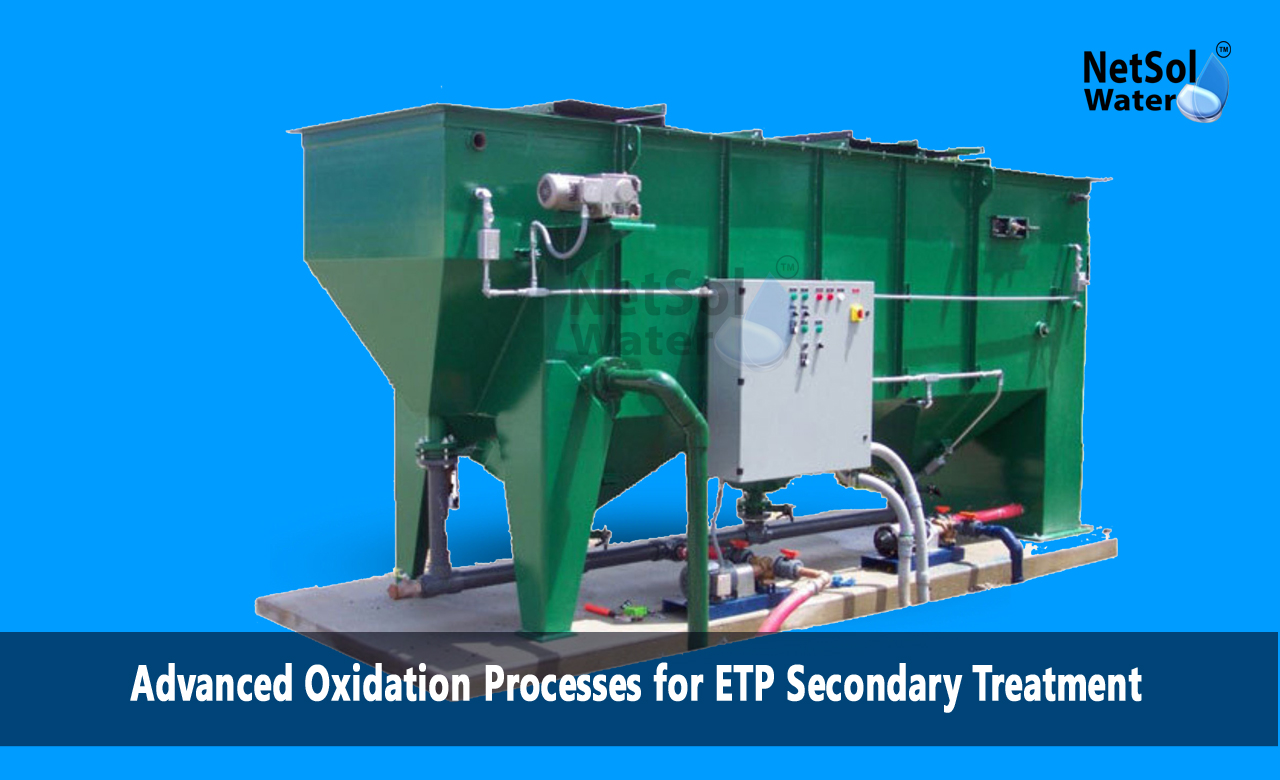Advanced Oxidation Processes for ETP Secondary Treatment
Effluent treatment plants face growing challenges in meeting strict environmental regulations. Advanced Oxidation Processes (AOPs) offer an effective solution for secondary treatment of industrial wastewater. These processes use powerful oxidizing agents to break down persistent organic pollutants that traditional methods cannot remove. The increasing adoption of AOPs stems from their ability to handle complex industrial effluents containing recalcitrant compounds. Industries such as textiles pharmaceuticals petrochemicals produce wastewater with compounds resistant to biological treatment. AOPs address this challenge through the generation of highly reactive hydroxyl radicals that can degrade these stubborn pollutants into simpler harmless substances. This innovative approach helps industries achieve cleaner effluent discharge while supporting environmental sustainability.
The following sections explore the key aspects of AOPs in ETP secondary treatment including their mechanisms benefits applications.
Types of Advanced Oxidation Processes
Advanced oxidation processes transform the landscape of wastewater treatment through their innovative approaches to pollutant degradation. These processes work by generating powerful oxidizing agents that break down complex organic compounds into simpler elements. Let us examine the main types of AOPs used in industrial applications.
UV-Based Advanced Oxidation: The combination of ultraviolet light with oxidizing agents creates a potent treatment system. UV radiation activates hydrogen peroxide or ozone to produce hydroxyl radicals. These radicals attack organic pollutants at multiple points leading to their complete mineralization. UV-based systems work effectively for treating pharmaceutical waste dye-containing effluents pesticide residues. The process requires minimal chemical input making it environmentally friendly.
Fenton Process: The Fenton process uses iron catalysts hydrogen peroxide to generate hydroxyl radicals. This method shows exceptional results in treating industrial effluents with high organic content. The process starts when ferrous iron reacts with hydrogen peroxide creating a chain reaction of radical formation. Industries appreciate its cost-effectiveness simplicity. The Fenton process removes colour organic compounds heavy metals from wastewater.
Ozonation: Ozone-based oxidation stands out for its powerful oxidizing capabilities. Ozone molecules directly attack pollutant molecules while also decomposing to form hydroxyl radicals. This dual action ensures thorough treatment of resistant compounds. The process leaves no chemical residues as ozone naturally decomposes into oxygen. Ozonation works particularly well for removing pharmaceuticals personal care products from wastewater.
Applications Benefits of AOPs
Advanced oxidation processes serve diverse industrial needs through their versatile applications. Understanding these applications helps industries choose the right treatment approach. Let us explore how different sectors benefit from AOP implementation.
Industrial Wastewater Treatment: Manufacturing facilities use AOPs to treat complex effluents. The processes handle mixed pollutants including organic compounds dyes heavy metals. Chemical industries benefit from AOPs ability to break down resistant molecules. The treatment systems adapt to varying pollutant loads maintaining consistent performance.
Pharmaceutical Waste Management: The pharmaceutical industry produces wastewater containing active pharmaceutical ingredients. AOPs effectively degrade these compounds preventing their release into the environment. The processes ensure compliance with stringent discharge regulations. Treatment systems remove antibiotics hormones other pharmaceutical residues from wastewater.
Textile Effluent Processing: Textile industries generate coloured wastewater with complex dye molecules. AOPs break down these dyes achieving complete decolorization. The processes handle varying dye concentration types. Treatment systems produce clear effluent suitable for discharge or reuse.
Operational Considerations Implementation
The successful implementation of advanced oxidation processes requires careful planning monitoring. Understanding operational factors ensures optimal treatment performance. Let us examine the key aspects of AOP implementation.
System Design Parameters: Treatment system design considers multiple factors including wastewater characteristics flow rates. Engineers select appropriate AOP combinations based on pollutant types. The design includes safety measures monitoring systems control mechanisms. Proper sizing ensures efficient treatment cost-effective operation.
Process Optimization: Regular monitoring helps optimize AOP performance. Operators adjust parameters such as oxidant doses UV intensity retention times. The optimization process considers energy consumption treatment effectiveness. Systems include automated controls for maintaining optimal conditions.
Maintenance Requirements: AOP systems need regular maintenance to ensure consistent performance. Maintenance schedules include equipment inspection cleaning replacement of components. Operators monitor system parameters document maintenance activities. Regular upkeep prevents unexpected downtime ensures reliable operation.
Take Action for Better Wastewater Treatment:
Transform your industrial wastewater treatment with advanced oxidation processes. Our team provides expert guidance in selecting implementing the right AOP solution for your needs. Contact us today to discuss how AOPs can enhance your ETP secondary treatment system. Schedule a consultation to learn more about optimizing your wastewater treatment processes.
Contact Netsol Water at:
Phone: +91-965-060-8473, Email: enquiry@netsolwater.com



